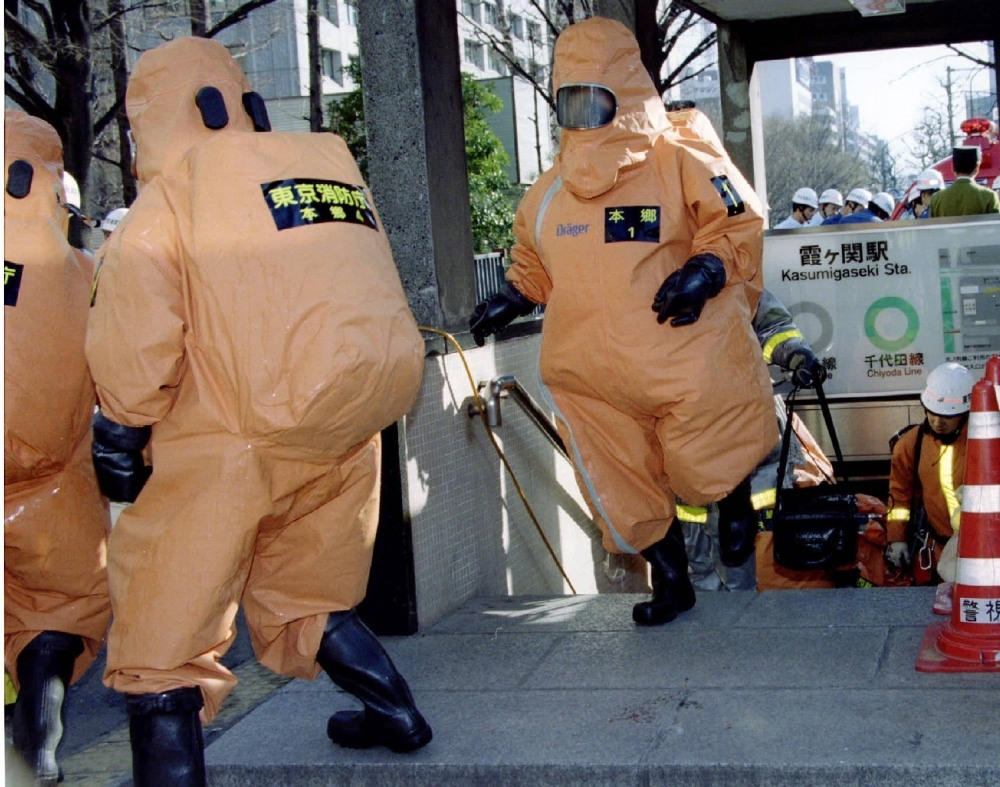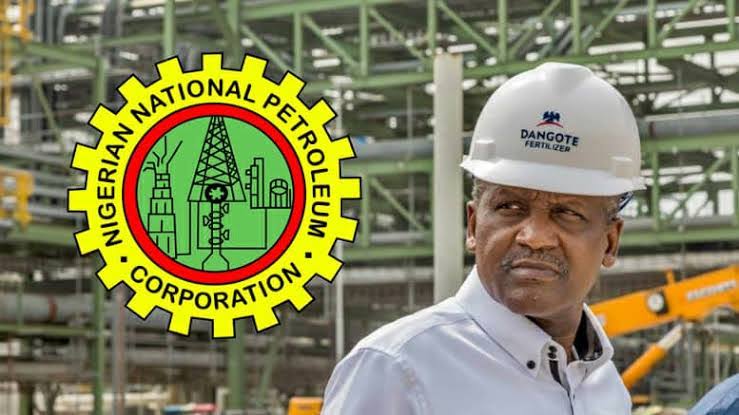Japan has plenty to offer in the field of detecting threats

- Sulaiman Umar
- 07 Sep, 2023
- 503
If Russia were to use nuclear weapons in Ukraine, would there be any health issues for Russian soldiers on the ground?
When I put this question to a European researcher well-versed in the Russian military's state of affairs, he said, "There would be no problem. Since the time of the Soviet Union, Russia has prepared for a nuclear war."
"If Russia used low-yield nuclear weapons, Russian soldiers would be safe as long as they stay inside armored vehicles equipped with filters that can remove radioactive materials. That is what Russian soldiers are taught," he said.
Looking at the current situation of the war in Ukraine, it is strategically difficult to imagine that Russia would dare to go up the escalation ladder by using nuclear weapons.
Still, at least tactically, we should assume that Moscow has been considering in advance the conditions in which to actually use nuclear weapons.
Nevertheless, in March 2022, it was reported that Russian forces who seized the site of the Chernobyl nuclear disaster picked up radioactive materials without using protection against radiation.
This shows that the soldiers weren’t sufficiently prepared or trained for radiation protection, indicating that Moscow places little importance on the safety of soldiers in deciding whether to use nuclear weapons.
Chemical weapons
The Soviet Union is also known to have developed biological and chemical weapons during the Cold War.
It was researching biological weapons using smallpox, Ebola virus and anthrax, and was developing and manufacturing chemical weapons such as sarin, VX and Novichok nerve agents.

Russian President Vladimir Putin announced in 2017 that the country had destroyed all of its chemical weapons. But in 2020, Alexei Navalny, the leader of the anti-government movement, became the subject of an attempted murder, when he was poisoned with Novichok.
Russian officers are believed to have used the nerve agent to poison Navalny.
The United States also possessed chemical weapons, but U.S. President Joe Biden announced in July that the country had completed the destruction of all of its chemical weapons.
The Organization for the Prohibition of Chemical Weapons, an international organization established under the Chemical Weapons Convention (CWC), also verified the completion of the destruction of chemical weapons declared by the U.S.
This means that all chemical weapons from the stockpiles declared by all 193 CWC member states have been verified as destroyed.
However, the U.S. government has been criticizing Russia and Syria, claiming that the two countries still possess chemical weapons and have used them in atrocities against their people.
North Korea is also believed to possess biological and chemical weapons.
Furthermore, the development of artificial intelligence in the field of drug discovery is posing the risk of chemical weapons being produced and used not only by states but also by terrorists.
A research team trained an AI-powered drug discovery model using data on insecticides and other toxic substances. It identified more than 40,000 potentially deadly molecules in just six hours.
The molecules included known chemical warfare agents and VX, which was used to assassinate Kim Jong Nam, the half-brother of North Korean leader Kim Jong Un.
There are states and terrorists in the world with intentions to use weapons of mass destruction and who have actually used them.
How can we prepare for such threats?
Sensing technologies
Chemical, biological, radiological and nuclear threats are collectively referred to as CBRN threats. They have a common characteristic of the agents being invisible, unless spraying equipment is used or they are loaded onto warheads.
Hence, to protect citizens from CBRN threats, it is extremely important to first "detect" them.
Nerve agents used for chemical weapons are also essentially odorless.
The 1995 sarin attack on the Tokyo subway by the Aum Shinrikyo cult killed 13 people and injured more than 5,800 people.
Some victims noticed an irritating smell at the site, possibly because the sarin used in the attacks remained unrefined and had low purity. If the sarin had been odorless, the number of victims could have been even higher.
The U.S. government has regarded CBRN threats as a serious national security threat and recognizes the significance of detection.
In February 2022, the Biden administration’s National Science and Technology Council (NSTC) updated its list of critical and emerging technologies (CETs) that can play an important role in America’s innovation and strengthen national security.
The CET list was initially created in 2020 under U.S. President Donald Trump's administration, designating 20 science and technology areas.
Under the Biden administration, the NSTC revised the list, designated 19 areas and specifically identified key subfields for each area.
One of the areas listed is "advanced and networked sensing and signature management," with CBRN threat detection and characterization identified as key subfields.
Sensing is a technology that uses sensors to detect nuclear, biological or chemical substances, as well as pathogens, and convert them into data to measure their quantities.
The Tokyo sarin attack was what prompted Washington to focus on early detection of CBRN threats.
In 1998, the Argonne National Laboratory, the U.S. Department of Energy’s science and engineering research center, launched a chemical warning and response enhancement system called the Program for Response Options and Technology Enhancements for Chemical/Biological Terrorism (PROTECT), which combines detectors, cameras and software to quickly alert security officials of a chemical release on subway systems.

In addition, following attacks in 2001, in which powdered anthrax spores were deliberately put into letters that were mailed through the U.S. postal system killing five people, the U.S. Department of Homeland Security (DHS) established its BioWatch program for early detection of bioterrorism and, since 2003, the department began discreetly setting up detectors for chemical and biological agents at major subway stations in the country.
However, the system has been plagued by false positives and high running costs. Many sensors were turned off at stations as a result.
Biosecurity
In Japan, following the sarin attacks in Tokyo and anthrax attacks in the U.S., public institutions like the National Research Institute of Police Science and the Japan Science and Technology Agency worked with a number of Japanese firms to develop detection devices.
BioBulwark, a briefcase-shaped biological agent detection system, can detect, in around an hour, roughly 20 types of pathogens that are likely to be used in bioterrorism attacks.
This system was installed in multiple police departments.
Also, Japan can now manufacture portable detectors that can identify chemical agents such as nerve agents.
However, these systems and devices have not been put into practical use widely in society, partly because of limited domestic demand.
Companies that developed the devices sought to sell them to government agencies in foreign countries, but couldn’t give a positive response when asked how widely they were used in Japan.
Moreover, to assess devices for biological and chemical agents, it is necessary to secure the cooperation of research institutions with biosafety level 4 facilities — laboratories with the highest level of biological safety that work with highly dangerous and exotic microbes such as the Ebola virus — as well as the Self-Defense Forces and foreign militaries. But such coordination has been insufficient.
As COVID-19 spread from China to the rest of the world, biosecurity attracted renewed attention. Japan has been offered a great opportunity for its sensing technology to leap onto the world stage.
Upgrading technologies to make CBRN threat-sensing devices mobile and more intelligent will contribute to protecting people's lives through the rapid detection of threats.
What is needed is a constant monitoring system connecting detectors installed in public transport systems such as stations and airports, stadiums where a large number of spectators gather and government facilities — namely, a high-performance alarm system that can detect not only fires but also CBRN threats.
By linking it to networks, the system can also be used to automatically report the detection of highly toxic substances, such as sarin, to first responders including police and fire departments.
Furthermore, during contingencies and on battlefields, sensors can be loaded on drones and gas masks to be used to grasp the situation and secure the safety of personnel.
Japan making advances in research and development of Internet of Things technologies related to health care, including sensing devices, is also serving as a tailwind.
Thanks to Japanese companies, applications of biochips — a collection of microminiaturized test sites that can perform a multitude of biochemical reactions from a very small amount of blood or saliva to detect pathogen or virus infections or allergies — are spreading in society.
It is believed that biochips can also be used to sense biological substances.
Cutting-edge semiconductor technologies including microfabrication, circuit design and packaging can be utilized for biochips as well.
The Defense Ministry and SDF have also shown an interest in sensing technology.
The ministry conducted joint research with the U.S. Defense Department between 2017 and 2022 on a portable system that recognizes color changes in chemical agent detector paper.
The ministry’s Defense Technology Guideline 2023 document lists faster and more accurate sensing and visualization of invisible things as being among the important technology areas to help defend the nation at all times.
K Program
Sensing technology nurtured in Japan is now coming under the spotlight on a new stage — economic security.
Based on the Economic Security Promotion Act, the government designates cutting-edge emerging technologies that need to be nurtured as specified critical technologies.
In 2022, the administration of Prime Minister Fumio Kishida designated 27 technologies in such fields as marine, space and aviation, and launched the Key and Advanced Technology R&D Through Cross Community Collaboration Program, dubbed the "K Program." A total budget of ¥500 billion has been allocated to it so far.
On Aug. 28, the Kisihida administration decided to add 23 technologies to the list of designated critical technologies.
Included in the list was a high-precision multigas sensing system technology that enables quick and accurate detection and identification of a variety of substances.
It is noteworthy that the government's plan is aimed at creating an analyzing system that can detect toxic substances not only at stations or airports but also at disaster sites and factories.
In other words, the Japanese government has in mind to develop and deploy "multiuse" technologies that can be used widely for disaster prevention, public safety, defense and the private sector, to support a safe and secure society.
Whether it be the defense industry or the manufacturing industry, a technology to swiftly detect potential hazards will lead to better protection of people’s lives.
A major challenge to implementing sensing technology in society until now was prevention of false detection.
It is vital to improve the accuracy of detection while increasing the number of agents and toxic substances that can be detected.
In addition, the detection capabilities can be enhanced by combining the technology with Japanese firms' network cameras, which were used in conflict zones such as Iraq, and with image analyzing AI, which has made great strides.
Multiuse technologies
The enthusiasm of government officials and researchers who once witnessed the tragedies of the sarin gas and anthrax attacks led to the development of detection technology.
Today, the world is facing threats from states that possess weapons of mass destruction and don't hesitate to sacrifice their own soldiers in using them, as well as terrorists.
CBRN threat detection technologies are multiuse technologies that need to be developed with collaboration from experts, including police and defense officials, first responders, medical personnel, industries and academics.
There should be no organizational silos in advancing the social application of technologies to protect people's lives.
The K Program, backed by hundreds of billions of yen, should have the convening power to gather the wisdom of Japan and build an ecosystem for critical technologies.
Japan should also conduct joint research on the technologies with the U.S. and other partner countries so that they can be used in international cooperation initiatives.
One such initiative is Official Security Assistance (OSA) — Japan’s new cooperation framework to provide other countries’ armed forces with equipment and assistance for infrastructure development to bolster their defense capabilities.
Like surveillance radar systems, sensing technologies that quickly detect threats should be considered a form of OSA, which Japan can confidently offer overseas to contribute to the world.






